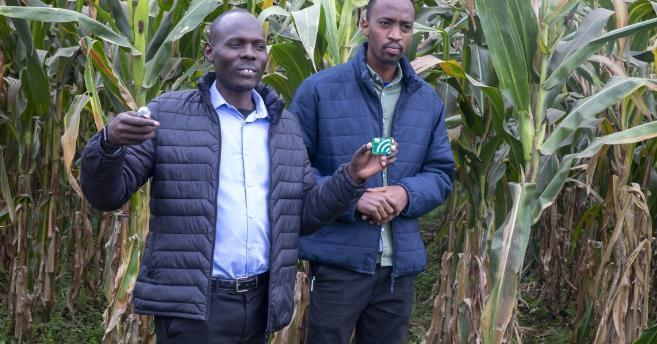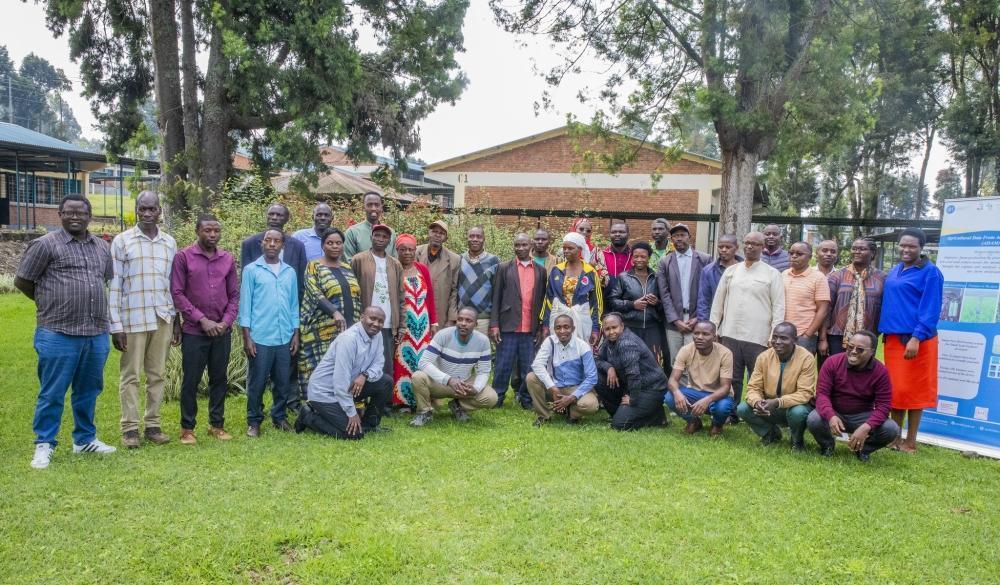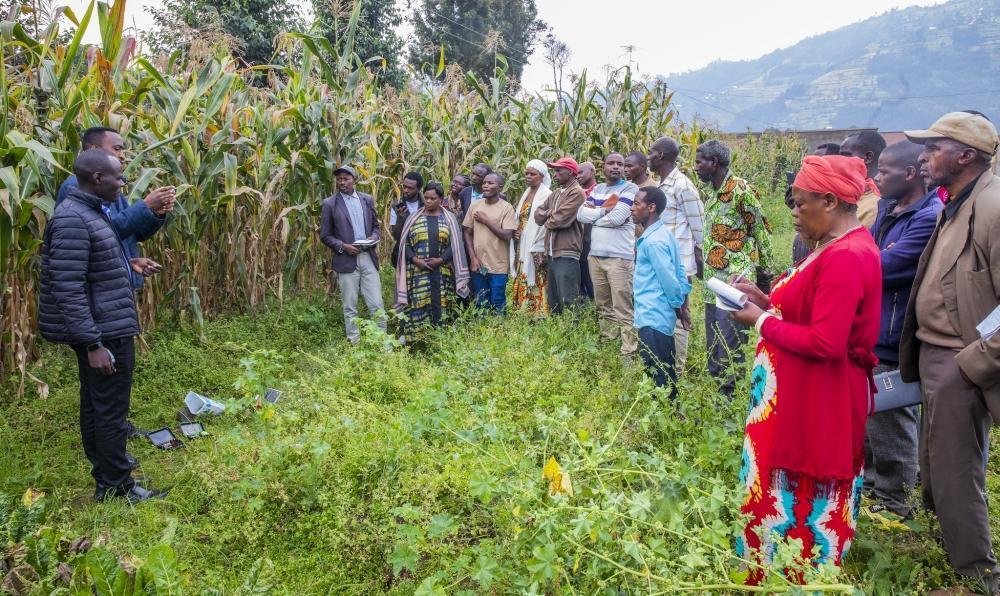Africa-Press – Rwanda. Five PhD students from the University of Rwanda (UR), through the African Centre of Excellence in Internet of Things (ACEIoT), have developed AudioMoth, a solar-powered and AI-integrated smart device designed to scare pest birds off farmlands.
The prototype, which has been under development for three years, was showcased during a three-day workshop from July 24-26, hosted at UR’s College of Agriculture, Forestry and Food Sciences (CAFF) in Busogo Sector, Musanze District.
It was supervised by researchers from Rochester Institute of Technology(RIT) in the United States of America and Carnegie Mellon University.
The event brought together 20 local farmers, 18 researchers from UR’s College of Science and Technology (UR-CST), among other key stakeholders.
The technology is part of the project titled “Acoustic Data From Agriculture Monitoring (ADAM),” implemented by the ACEIoT in collaboration with the Rochester Institute of Technology (RIT) in the United States of America and Carnegie Mellon University.
It was funded by a grant from Partnership for Skills in Applied Sciences, Engineering, and Technology’s Regional Scholarship and Innovation Fund (PASET-RSIF).
How does AudioMoth work?
AudioMoth is designed to monitor bird sounds and activities in the crop farm using Internet of Things (IoT) sensors and machine learning models. It captures bird sounds through a microphone on either Nano BLE sense or XIAO ESP32S3 sense and identifies specific bird species using a TinyML (Tiny Machine Learning) model.
If pest birds are detected, the device triggers loud deterrent sounds via a connected speaker to chase them away.
On the crop field, this solar-powered device is elevated slightly above the ground to be able to accurately capture the sounds and can protect up to one hectare of the farmland. For larger fields, multiple devices can be installed.
The device setup is made up of an SD card for data storage, a microphone, a solar panel, and a speaker. It has a waterproof case, and is made with Global System for Mobile Communications (GSM) and Global Positioning System (GPS) technologies for location tracking, keeping the farmer’s information, and easy communication, allowing the farmer to monitor its functionality and effectiveness.
Importantly, farmers do not need to own smartphones to interact with the system. The device sends SMS alerts in case of malfunction, failure to scare birds, or if it is moved or stolen, allowing rural farmers with even satellite phones to be able to use it.
“We have trained our AI model to recognise sounds from seven common pest-bird species in Rwanda,” explained Samson Ooko, a second-year Phd student involved in the project.
“The system also rotates deterrent sounds to prevent birds from adapting or getting used to similar sounds. If the birds persist, the farmer is alerted instantly.”
Farmers praise the innovation
The workshop was not only to present the device and its technology benefits for farmers, but also to gather feedback from local farmers and feedback, which would be used to improve the prototype before implementation and scaling.
François-Xavier Ndolimana, Agronomist and Natural Resources Officer at Busogo Sector, described the project as a timely intervention, explaining that in Busogo alone, wheat and maize production are affected by pest birds, and predicts an increase in production once the project is implemented.
“Birds are a major threat to maize and wheat production in this region. Farmers often resort to traditional methods like scarecrows or sending their children to chase birds, which is not sustainable,” Ndolimana said.
“If one device can protect a hectare, it will definitely boost productivity.”
Dorothée Uwababyeyi, a farmer from Kabaya Village in Gisesero Cell, described the project as “a solution we’ve long waited for.”
“For other pests, we have pesticides. But with birds, we’re left helpless. Sometimes our children miss school to chase them off. If this technology is scaled, it will undoubtedly revolutionise our harvest,” she said.
A step forward post-research
Professor Damien Hanyurwimfura, Director of ACEIoT and Co-Project Investigator emphasised that the device has undergone thorough testing over the past three years and is now ready for practical application.
“Throughout the workshop, we’ve noticed that farmers are interested in the project. We want to find partners who can help us multiply devices and get them on the market for people to use,” he said.
“But for now, we have got feedback and we are going to do some improvements and incorporate those in the device to best serve farmers.”
Commenting on farmers’ feedback, Hanyurwimfura noted that there are more projects at ACEIoT focusing on agriculture by incorporating emerging technologies like AI, aiming to increase production.
Some of the equipment used as part of the AudioMoth tech. By Craish Bahizi.
The researchers and farmers take a group photo after a training on Friday, July 25. Photo by Craish Bahizi.
The researchers talk to farmers about AudioMoth. By Craish Bahizi.
For More News And Analysis About Rwanda Follow Africa-Press









